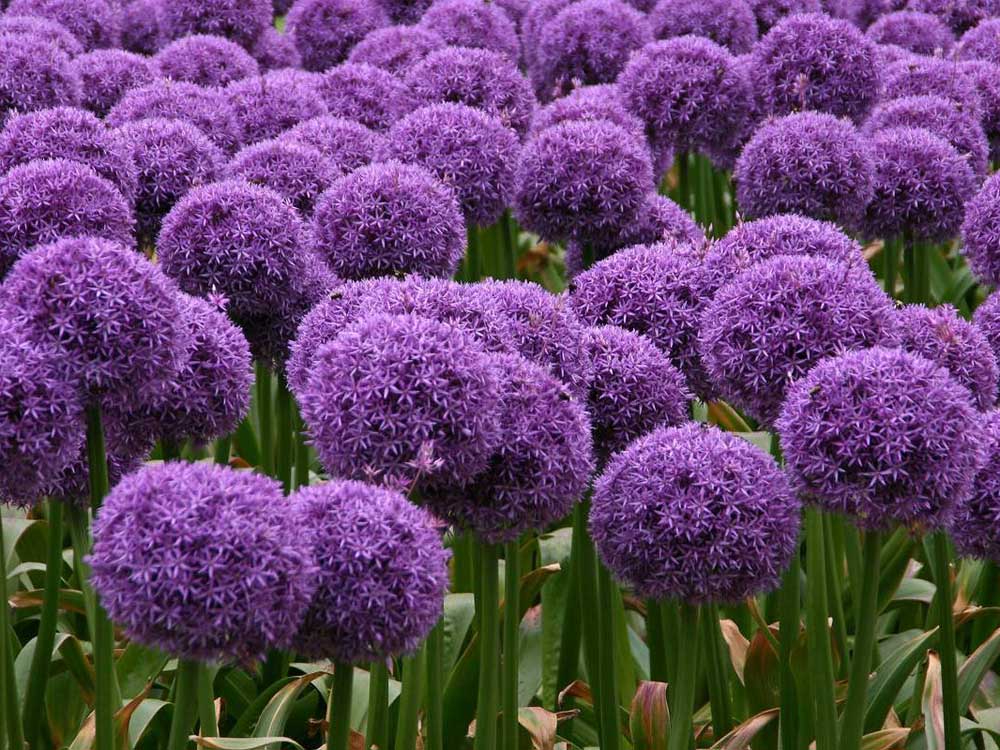Growing elusive ornamental alliums
Published 12:00 am Tuesday, August 30, 2016

- Amy Jo Detweiler / Submitted photoThe “Globemaster,” with its large spheres up to 10 inches across, is the most popular variety of alliums.
At the time of the Alaska earthquake in 1964, I lived in Soldotna, Alaska, on the Kenai Peninsula. We were isolated from many communities because of severe damage to the highways. When the roads were again passable, we drove to a small community at the end of the peninsula to assess the damage.
Destruction from the earthquake and tidal wave offered many Kodak moments. One in particular compelled me to take a picture. The subject was a very battered and broken commercial fishing boat that had come to rest against the shore. The name of the boat was Try Again. The 3-inch square picture is in a leather picture frame, and I look at it every day.
Trending
What does that have to do with gardening? My true confession is that for some reason I can’t grow ornamental alliums. I look at my picture every day with thoughts of fall bulb planting and trying again.
Alliums have all the attributes we look for, including showy flowers that attract bees, butterflies and hummingbirds, great for cutting and drying, easy culture and exceptional hardiness. Plus, they are deer and vole resistant (or so the books claim). It is hard to figure out why these bulbs are not more appreciated and visible in our area. Maybe it has something to do with our perception of their culinary cousins — onions, chives, shallots and garlic. I have often wondered how such a beautiful stately flower could be related to a lowly onion.
Surprisingly, alliums come in a broad palette of color and heights, bloom time and flower form. There are an estimated 800 to 1,000 different species of alliums worldwide with A. cernuum (nodding onion), A. stellatum (American prairie onion), and A. texanum (a species found in Texas) being native to North America.
Depending on the variety, alliums can bloom from May through October in USDA zones 3 to 5. Alliums have undemanding cultural requirements. They grow in most soils as long as the soil is well-drained. Alliums do best in full sun. The majority of alliums originated in regions that experience dry summers. It is often noted under the plant culture that the foliage exists quietly after blooming without endlessly photosynthesizing floppy foliage.
The most popular varieties are the giant Persian alliums that command center stage and the ones we generally lust after.
In June, 6-inch balls of deep lavender florets on 4-foot stems seem to float above lower growing perennials. The most popular variety is “Globemaster” with its huge spheres up to 10 inches across on strong stems averaging 3 feet in height. The “Giant” produces purple flowers 6 to 8 inches across.
Trending
The low-growing Turkistan allium, (A. karataviense) was found in Central Asia on high desert plateaus, and semi-arid steppes and would be well suited to rock gardens.
Of all the alliums, this variety has the finest foliage, some think more attractive than the flower. Two or three elegantly-curved broad leaves appear in May. They are rigid and ridged with pale blue purple stripes on matte blue-green leaves. The 6- to 8-inch wide pink or white florets are also beautiful as a dried flower.
One of the best small-headed selections is a native from Siberia and introduced in Massachusetts by breeder Mark McDonough under the name of Millenium. The variety blooms profusely for about a month and won’t reseed or become invasive.
“Blue Drumstick” is also a native to Siberia, displaying 1- to 2-inch flower heads atop a 10- to 20-inch stem. They gloom in June and July. The drumstick varieties tend to be a bit floppy, so plant them among other perennials that can provide support.
Allium bulbs are planted any time in the fall before the ground freezes, burying the top of the bulb at a depth three times its diameter.
Alliums aren’t as popular as tulips, daffodils and other spring blooming bulbs so availability at local nurseries and garden centers in the fall may be limited and you will need to check out bulb catalogs.
If I have piqued your interest with something new, you might want to start doing some research before the fall bulbs start arriving.
As for me, I will “try again” this fall. If I fail one more time, I will be consider ordering a set of the steel everlasting alliums featured in the Gardener’s Supply catalog.
— Reporter: douville@bendbroadband.com








